Enhancing Buildings with Modern Curtain Walling Systems
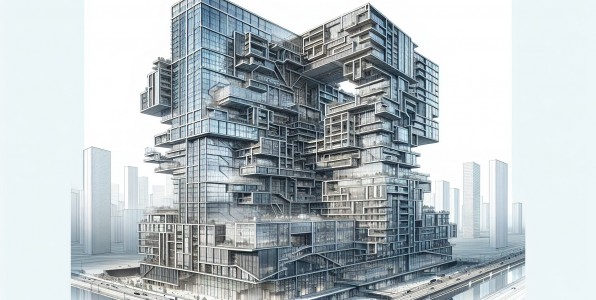
Enhancing Buildings with Modern Curtain Walling Systems
The post Enhancing Buildings with Modern Curtain Walling Systems appeared first on UK Construction Blog.
Curtain walling is a type of cladding used in construction to protect buildings from weather and enhance their appearance. It doesn’t support structural loads, offering design flexibility and energy efficiency. This article will cover the different types, key components, and the advantages of using curtain walling systems.
Key Takeaways
- Curtain walling systems, made of non-structural aluminium cladding, provide crucial protection from external elements while allowing for aesthetic flexibility, making them integral to modern architecture.
- Three main types of curtain walling systems exist: stick systems for versatile on-site assembly, unitised systems for efficient prefab installation, and specialized systems like Spider Glass and cable net for high transparency and minimal structural elements.
- Advantages of curtain walling systems include enhanced thermal efficiency, modern aesthetics, and cost reductions through minimized material use and streamlined construction processes, though they require regular maintenance to ensure longevity.
Understanding Curtain Walling Systems
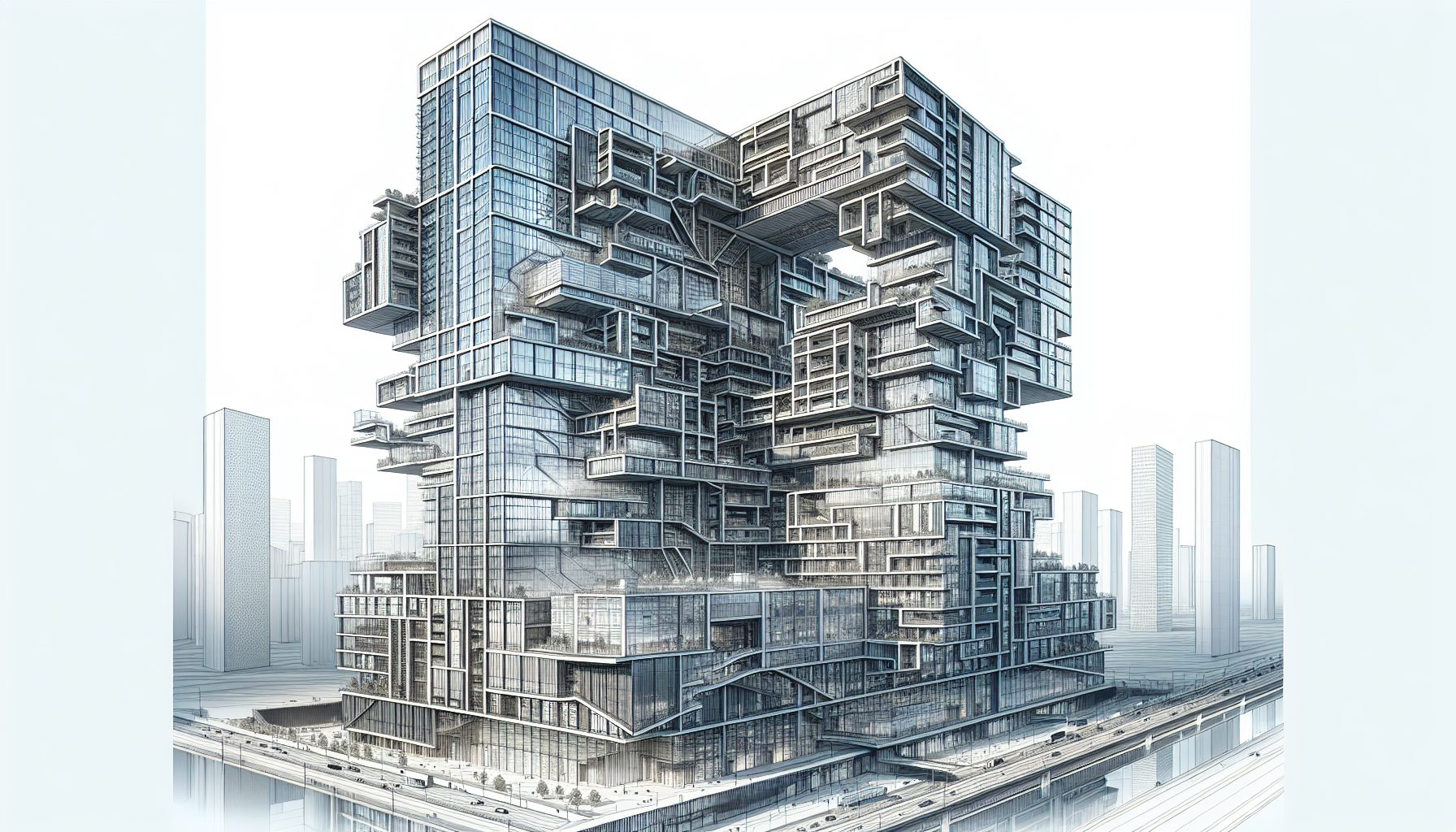
Curtain walling is a non-structural fabricated aluminium cladding system designed to adorn the external walls of large multi-storey buildings. Unlike traditional walls, curtain walls:
- Do not support any weight other than their own panelling
- Act as a protective shield, separating the interior from the exterior
- Bear none of the structural loads of the building
The primary purpose of a curtain wall is to protect the building’s interior from the elements, such as wind, rain, and temperature fluctuations. Curtain wall systems maintain the façade’s integrity and functionality by transferring any imposed loads to the building’s structure via anchors that attach the mullions to the building. This combination of protection and aesthetic flexibility has made curtain walls a staple in modern architecture.
Types of Curtain Walling Systems
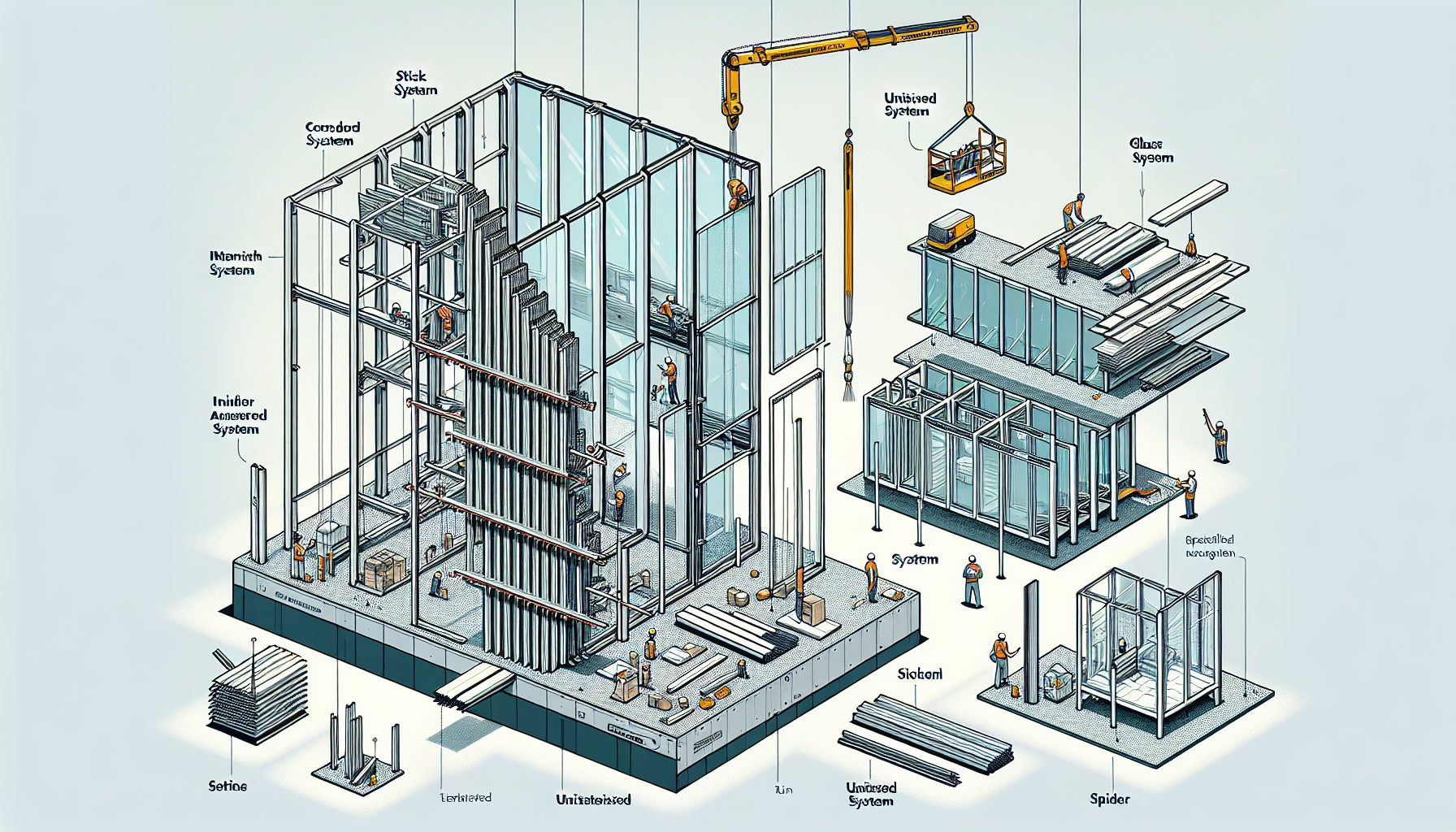
Curtain walling systems come in various forms, each offering unique benefits and installation processes. The primary types include stick systems, unitised systems, and specialized types like spider glass. Each system caters to different building requirements and architectural visions, providing flexibility and functionality in design and construction.
We’ll delve into the details of these types.
Stick Systems
Stick-built curtain wall systems are assembled piece by piece at the job site, making them highly versatile and flexible for various façade designs. This system allows for on-site customization, supporting unique building shapes, sloped glass roofs, and geometric constructions. However, it requires additional on-site equipment like scaffolding and cranes, making it more suitable for low-rise buildings and areas with exterior access.
Unitised Systems
Unitized curtain wall systems are prefabricated and pre-assembled off-site, significantly reducing on-site labor and speeding up the installation process. These systems are ideal for high-rise buildings due to their efficient installation and quality control in a climate-controlled environment.
Unitised systems streamline the construction process and lower field installation costs by eliminating the need for on-site installation of individual components.
Other Types
Beyond stick and unitised systems, other types of curtain walling systems like Spider Glass and cable net provide frameless appearances with high transparency. Spider Glass systems use point-fixings to hold the glass, creating a clean, modern look.
Cable net systems utilize pre-stressed cables to support the glass, allowing for minimalistic structural elements and maximum transparency, enhancing the aesthetic appeal of contemporary buildings.
Key Components of Curtain Walls
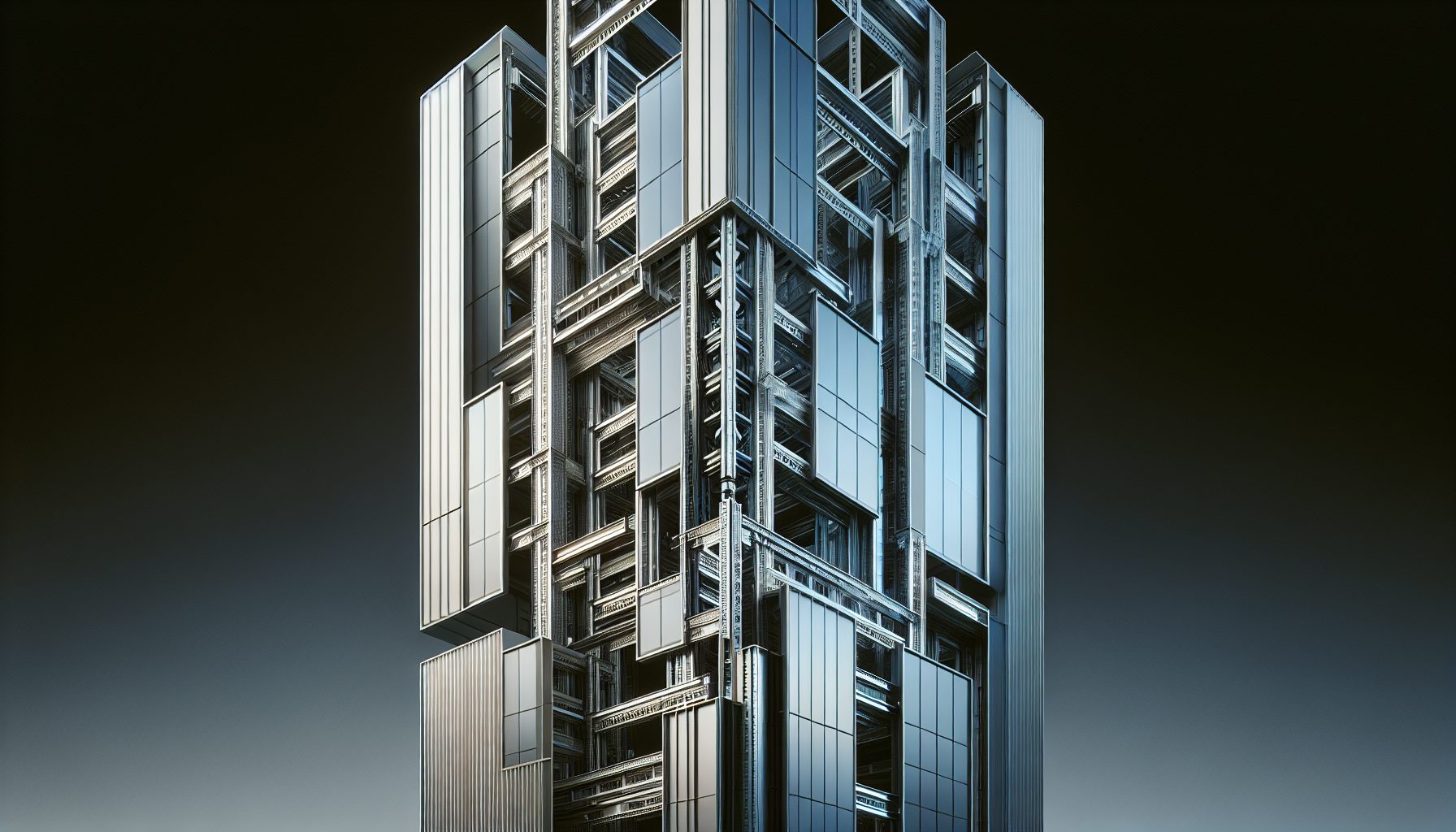
Curtain walls are composed of several key components, each playing a vital role in their functionality and appearance. The primary elements include:
- The frame, typically made from aluminium
- The glass facades, which enhance natural light and energy efficiency
- Metal panels, which can be incorporated to provide structural integrity and aesthetic diversity
These components, along with other building components, work together to create a durable, visually appealing exterior that meets various architectural and functional requirements.
Aluminium Frames
Aluminium curtain walling is a cornerstone of curtain wall systems, offering the following benefits:
- Lightweight and corrosion-resistant support for various glazing materials
- Designed to support heavy glass weights
- Provide greater free spans, making them suitable for designs with extensive daylighting.
The durability and environmental resistance of aluminium frames have popularized their use in modern construction.
Glass Facades
Glass facades are integral to curtain wall systems, providing the following benefits:
- Enhancing natural light
- Improving energy efficiency
- Enhancing sound insulation
- Allowing for larger glass areas
- Providing uninterrupted views
- Creating a spacious atmosphere.
When designed and installed correctly, glazed facades, also known as glass facades, reduce heating and cooling costs, thereby making them a practical and visually appealing choice for contemporary buildings.
Metal Panels
Metal panels in curtain walls offer the following benefits:
- Long-term durability
- Minimal maintenance
- Various finishes to meet specific architectural and aesthetic requirements
- Adding structural integrity and visual diversity to the building’s exterior.
This versatility makes interior metal panels a valuable component in creating aesthetically pleasing and durable curtain wall systems.
Advantages of Curtain Walling Systems
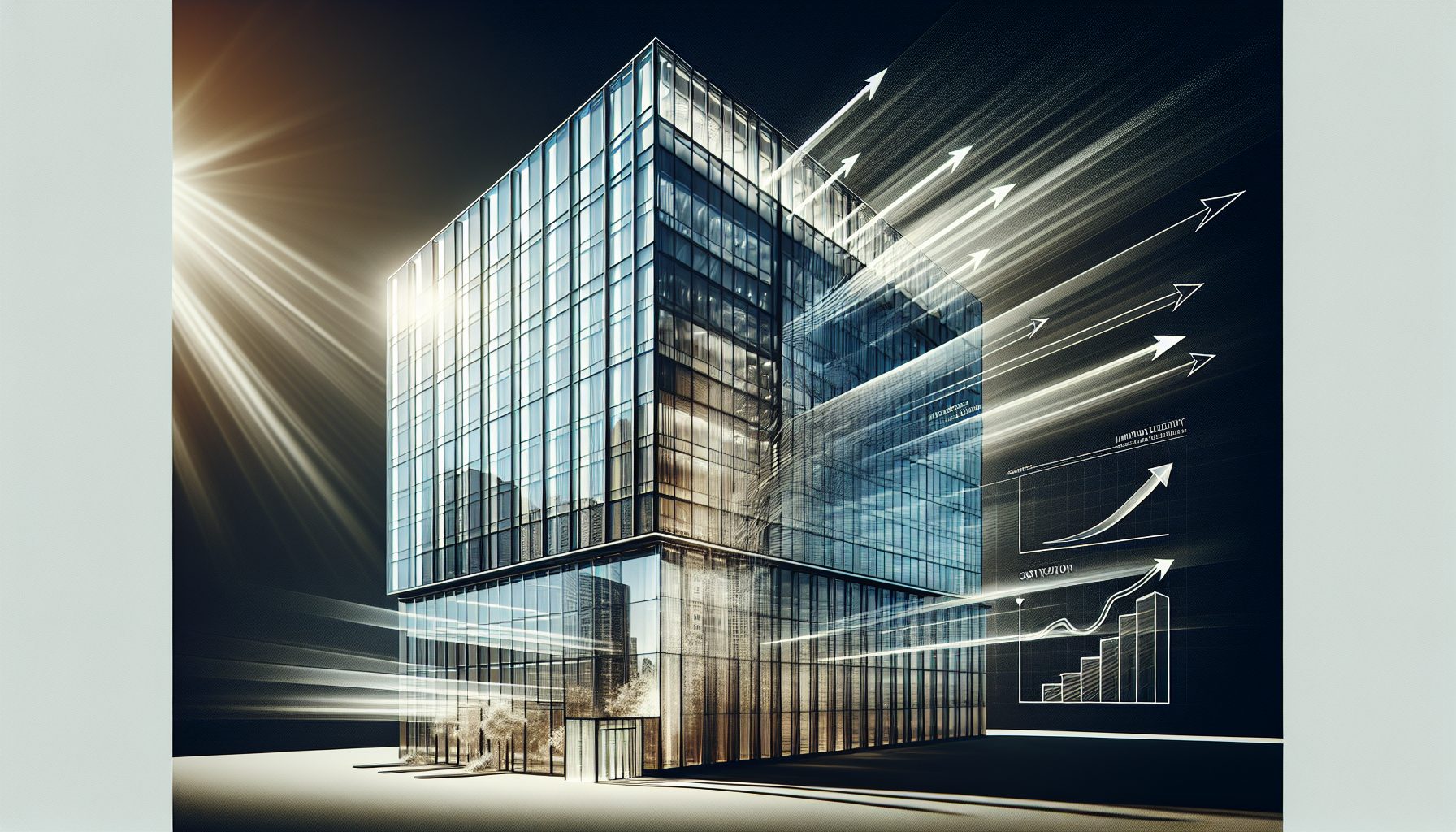
Curtain walling systems offer numerous advantages, making them a preferred choice in modern construction. These benefits include improved thermal efficiency, modern aesthetics, and cost reduction. Curtain walls enhance a building’s overall functionality and aesthetics by regulating indoor temperatures, beautifying appearances, and simplifying installation processes.
Thermal Efficiency
Thermal efficiency is a significant advantage of curtain wall systems. These systems enhance a building’s thermal stability and simplify the control of heating and cooling systems by providing extra weather protection and reducing solar transmission. This leads to reduced energy bills and enhanced comfort for occupants. The use of double or triple glazing and thermal breaks further improves thermal insulation, contributing to energy-efficient building envelopes. One of the reasons for this efficiency is the high heat transfer coefficient of curtain wall systems.
Furthermore, green curtain wall designs are now prioritizing the enhancement of insulation and the inclusion of natural ventilation. This approach not only conserves energy but also enhances the indoor environment’s quality. Properly applied sealants and thermal breaks are crucial in maintaining the thermal efficiency of curtain walls, ensuring long-term performance and sustainability.
Modern Aesthetics
Curtain walls offer a sleek and contemporary exterior that significantly improves the visual appeal of buildings. They can be customized with various material finishes, such as glass, metal, or stone veneer, to suit different architectural styles. This flexibility allows architects to create unique and visually stunning facades that attract clients, impress investors, and add a sense of professionalism to the building.
Cost Reduction
Curtain walling systems contribute to cost reduction in the following ways:
- Minimizing the need for interior load-bearing walls
- Reducing material usage and associated costs
- Simplifying the installation process, which lowers overall construction costs.
This combination of functional benefits and economic efficiency makes curtain wall systems an attractive option for modern buildings.
Maintenance and Repair of Curtain Walls
Maintaining and repairing curtain walls is crucial to ensure their longevity and performance. Regular inspections, sealant replacement, and frame and panel maintenance are essential practices to prevent water infiltration and air leakage. By adhering to these maintenance routines, building owners can keep their curtain walls looking good and functioning effectively for many years.
Regular Inspections
Routine inspections are vital for identifying and addressing minor issues in curtain walls before they become major problems. These inspections should focus on sealant joints, gaskets, and drainage systems to prevent failures.
Additionally, aluminium frames and metal panels should be regularly cleaned to remove dirt and prevent corrosion, ensuring the curtain wall system remains in optimal condition.
Sealant Replacement
Sealant replacement is necessary when signs of cracking or loss of adhesion are present. The typical service life of perimeter sealants is 10 to 15 years, after which replacement is required to maintain the performance of the curtain wall system.
Prompt attention to sealant issues allows building owners to prevent water infiltration and preserve the thermal efficiency of their curtain walls.
Frame and Panel Maintenance
Frame and panel maintenance involves:
- Cleaning, repairing, and replacing damaged components to ensure the curtain wall system’s performance
- Brushing or vacuuming insulated curtain walls covered in uncoated fabric
- Keeping sliding curtain wall tracks clean using compressed air
Damaged or missing components, such as trolleys and roller tracks, should be replaced quickly to prevent further damage.
Challenges in Curtain Walling Systems
Curtain wall systems must manage various structural loads and environmental stresses to maintain their integrity. Challenges such as wind load, thermal expansion, and differential movement require careful consideration during design and installation.
Curtain wall systems emerged to overcome these challenges, maintaining a functional and visually appealing building façade.
Wind Load
Managing wind load is crucial for the stability of curtain wall systems. Reinforced frames and proper anchoring techniques help distribute wind pressure evenly across the structure. Mullions, as primary load transfer elements, carry wind loads from the curtain wall façade to the building structure.
Effective wind load management involves analyzing elements like mullions and transoms and considering local wind speeds, building height, and orientation.
Thermal Expansion
Thermal expansion can cause significant stress on curtain wall systems if not properly managed. Using materials that can flexibly contract and expand without causing damage is essential in addressing thermal expansion.
Thermal breaks and flexible joints help accommodate these movements, ensuring the curtain wall system remains intact and functional despite temperature changes.
Differential Movement
Differential movement, caused by factors such as building sway, thermal expansion, and contraction, poses a challenge to curtain wall systems. Incorporating flexible joints and splices in vertical mullions helps accommodate these movements, maintaining the structural integrity of the curtain wall.
This approach ensures the curtain wall system can withstand varying degrees of movement without compromising performance.
Innovations in Curtain Walling

Innovations in curtain walling are pushing the boundaries of what’s possible in modern architecture. Recent advancements include smart glazing, lightweight materials, and sustainable practices, all aimed at improving energy efficiency, structural performance, and environmental impact.
These innovations promise to transform the way we design and construct buildings, making them more efficient and sustainable.
Smart Glazing
Smart glazing technologies, such as electrochromic and thermochromic glass, are revolutionizing curtain wall systems. These technologies allow for dynamic shading and self-tinting, adjusting transparency based on external conditions to manage indoor temperatures.
The integration of smart glass into curtain walls enables buildings to lessen their heating and cooling requirements, thereby boosting energy efficiency and occupant comfort.
Lightweight Materials
Employing lightweight materials in curtain wall systems significantly reduces the overall weight without sacrificing durability. Advanced composites and high-strength, lightweight aluminum alloys are increasingly utilized to achieve this reduction. Honeycomb panels, known for their excellent strength-to-weight ratio, are also becoming a popular choice.
These innovations allow for more flexible and efficient designs, making it easier to construct high-rise buildings with extensive use of curtain walls.
Sustainable Practices
Sustainable practices in curtain walling systems include:
- The use of recycled materials, such as aluminum and glass, to lower the carbon footprint
- The use of bio-based polymers in production processes
- The use of green energy in production processes
These practices promote sustainability and help reduce the environmental impact of building projects.
Innovations such as Saint-Gobain’s zero-carbon flat glass and opaque glass emphasize the potential of eco-friendly curtain wall systems in fostering a greener future.
Summary
The evolution of curtain walling systems has been nothing short of revolutionary, transforming the way we design and experience buildings. From their inception as simple protective facades to sophisticated, energy-efficient systems, curtain walls have become an integral component of modern architecture. They offer a perfect blend of aesthetics and functionality, enhancing the visual appeal of buildings while providing essential benefits such as thermal efficiency, cost reduction, and ease of maintenance.
As we look to the future, innovations like smart glazing, lightweight materials, and sustainable practices promise to push the boundaries even further. These advancements not only improve the performance of curtain wall systems but also align with global efforts towards sustainability and energy efficiency. Embracing these technologies will undoubtedly lead to more resilient, beautiful, and eco-friendly buildings, setting new standards for the built environment.
Frequently Asked Questions
What is the primary purpose of a curtain wall?** **?
The primary purpose of a curtain wall is to protect the building’s interior from external elements while providing aesthetic appeal and energy efficiency. It also helps regulate temperature fluctuations and provide insulation.
What are the main types of curtain walling systems?** **?
The main types of curtain walling systems are stick systems, unitised systems, and specialized types like spider glass and cable net systems. Stick systems and unitised systems are the most common types.
How do curtain wall systems improve thermal efficiency?** **?
Curtain wall systems improve thermal efficiency by providing weather protection, reducing solar transmission, and stabilizing indoor temperatures. Additionally, the use of double or triple glazing and thermal breaks further enhances insulation.
What maintenance practices are essential for curtain wall systems?** **?
Regular inspections, sealant replacement, and frame and panel maintenance are essential for curtain wall systems to prevent water infiltration and air leakage and ensure long-term performance.
What innovations are shaping the future of curtain walling systems?** **?
The future of curtain walling systems is being shaped by innovations such as smart glazing technologies, lightweight materials, and sustainable practices like the use of recycled materials and green energy in production processes. These advancements are revolutionizing the industry.
Comments are closed